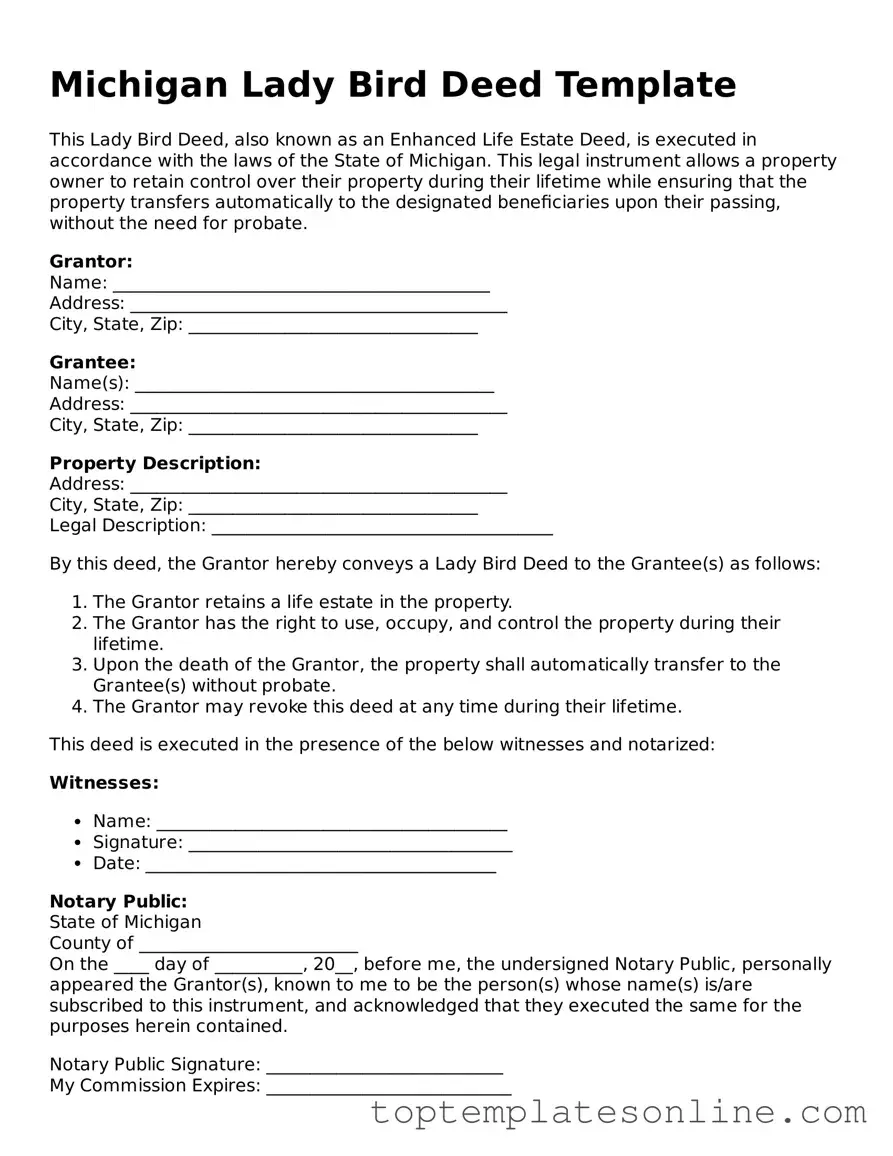In the realm of estate planning, the Michigan Lady Bird Deed has gained attention for its unique ability to facilitate the transfer of property while providing significant benefits to property owners and their heirs. This specific type of deed allows individuals to retain control over their property during their lifetime, ensuring they can continue to live in and manage their home. When the property owner passes away, the deed automatically transfers ownership to the designated beneficiaries without the need for probate, streamlining the process and reducing potential costs. Furthermore, the Lady Bird Deed offers protection against creditors, as the property is not considered part of the deceased's estate. This form is particularly advantageous for those looking to maintain their property’s value while simplifying the transfer process for their loved ones. As a result, understanding the intricacies of the Michigan Lady Bird Deed is essential for anyone considering estate planning options that prioritize both personal control and a smooth transition of assets.
